-
Home
-
Contributors
-
International
-
Account
-
Information
More From Contributor
- Integrated Flat Panel)5120 x 3200 pixels On-board graphics adapter refresh rate at maximum resolution (HDMI)60 Hz On-board graphics adapter refresh rate at maximum resolution (Display Port)60 Hz On-board graphics adapter refresh rate at maximum resolution (e DP
- Integrated Flat Panel)60 Hz Maximum on-board graphics adapter memory 64 GBNumber of displays supported (on-board graphics)3 On-board graphics adapter maximum resolution (HDMI)4096 x 2160 pixels On-board graphics adapter Open GL version 4.5 On-board graphics adapter model Intel UHD Graphics 750 On-board graphics adapter Yes On-board graphics adapter dynamic frequency (max)1300 MHz On-board graphics adapter base frequency 350 MHz Discrete graphics adapter model Not available Power Thermal Design Power (TDP)65 WTechnical details Intel Stable Image Platform Program (SIPP) Yes Intel&174; Secure Key Yes Thermal Monitoring Technologies Yes Intel&174; Turbo Boost Technology 2.0 Intel Trusted Execution Technology Yes Intel&174; Quick Sync Video Technology Yes Intel&174; In Tru&132;&162; 3D Technology Yes Intel&174; Identity Protection Technology (Intel&174; IPT) Yes Intel&174; Hyper Threading Technology (Intel&174; HT Technology) Yes Intel&174; Clear Video HD Technology (Intel&174; CVT HD) Yes Intel&174; AES New Instructions (Intel&174; AES-NI) Yes Idle States Yes Execute Disable Bit Yes Enhanced Intel Speed Step Technology Yes PCI Express slots version 4.0PCI Express configurations 1x 16+1x 4, 2x 8+1x 4, 1x 8+3x 4 Supported instruction sets SSE4.1, SSE4.2, AVX 2.0, AVX-512 Scalability 1SIntel VT-x with Extended Page Tables (EPT) Yes Embedded options available No CPU configuration (max)1 Intel Virtualization Technology for Directed I/O (VT-d) Yes Intel 64 Yes Thermal Design Power (TDP)65 WSupported memory types DDR4-SDRAMStatus Launched Market segment Desktop Launch date Q1'21 Intel Virtualization Technology (VT-x) Yes Processor cache type Smart Cache Target market Gaming Features On-board graphics adapter ID0x 4C8 A Maximum number of PCI Express lanes 20 Thermal Design Power (TDP)65 WProcessor package size 37.5 x 37.5 mm Processor ARK ID212277 Thermal Monitoring Technologies Yes Idle States Yes Execute Disable Bit Yes PCI Express slots version 4.0PCI Express configurations 1x 16+1x 4, 2x 8+1x 4, 1x 8+3x 4 Supported instruction sets SSE4.1, SSE4.2, AVX 2.0, AVX-512 Scalability 1SEmbedded options available No CPU configuration (max)1 Market segment Desktop Harmonized System (HS) code 8542310001 Export Control Classification Number (ECCN)5A992CN3 Commodity Classification Automated Tracking System (CCATS)G167599 Use conditions PC/ Client/ Tablet Processor special features Intel Clear Video Technology Yes Intel Software Guard Extensions (Intel SGX) No Intel Virtualization Technology for Directed I/O (VT-d) Yes Intel 64 Yes Intel Turbo Boost Max Technology 3.0 No Intel&174; Optane&132;&162; Memory Ready Yes Intel&174; OS Guard Yes Intel Stable Image Platform Program (SIPP) Yes Intel&174; Secure Key Yes Intel&174; Turbo Boost Technology 2.0 Intel Trusted Execution Technology Yes Intel&174; Quick Sync Video Technology Yes Intel&174; In Tru&132;&162; 3D Technology Yes Intel&174; Identity Protection Technology (Intel&174; IPT) Yes Intel&174; Hyper Threading Technology (Intel&174; HT Technology) Yes Intel&174; Clear Video HD Technology (Intel&174; CVT HD) Yes Intel&174; AES New Instructions (Intel&174; AES-NI) Yes Enhanced Intel Speed Step Technology Yes Intel VT-x with Extended Page Tables (EPT) Yes Intel Virtualization Technology (VT-x) Yes Intel&174; Boot Guard Yes Intel&174; Thermal Velocity Boost No Intel&174; Deep Learning Boost (Intel&174; DL Boost) Yes Intel&174; v Pro&132;&162; Platform Eligibility Yes Intel&174; Turbo Boost Technology 2.0 frequency 4.6 GHz Intel&174; Gaussian & Neural Accelerator (Intel&174; GNA) 2.0 Yes Operational conditions Tjunction 100 &176;CPackaging data Package type Retail box Weight & dimensions Processor package size 37.5 x 37.5 mm Other features Maximum internal memory 128 GBCPU configuration (max)1\n\n Product Family: Core\n\n ...
- Integrated Flat Panel)5120 x 3200 pixels On-board graphics adapter refresh rate at maximum resolution (HDMI)60 Hz On-board graphics adapter refresh rate at maximum resolution (Display Port)60 Hz On-board graphics adapter refresh rate at maximum resolution (e DP
- Integrated Flat Panel)60 Hz Maximum on-board graphics adapter memory 64 GBNumber of displays supported (on-board graphics)3 On-board graphics adapter maximum resolution (HDMI)4096 x 2160 pixels On-board graphics adapter Open GL version 4.5 On-board graphics adapter model Intel UHD Graphics 750 On-board graphics adapter Yes On-board graphics adapter dynamic frequency (max)1300 MHz On-board graphics adapter base frequency 350 MHz Discrete graphics adapter model Not available Power Thermal Design Power (TDP)65 WTechnical details Intel Stable Image Platform Program (SIPP) Yes Intel&174; Secure Key Yes Thermal Monitoring Technologies Yes Intel&174; Turbo Boost Technology 2.0 Intel Trusted Execution Technology Yes Intel&174; Quick Sync Video Technology Yes Intel&174; In Tru&132;&162; 3D Technology Yes Intel&174; Identity Protection Technology (Intel&174; IPT) Yes Intel&174; Hyper Threading Technology (Intel&174; HT Technology) Yes Intel&174; Clear Video HD Technology (Intel&174; CVT HD) Yes Intel&174; AES New Instructions (Intel&174; AES-NI) Yes Idle States Yes Execute Disable Bit Yes Enhanced Intel Speed Step Technology Yes PCI Express slots version 4.0PCI Express configurations 1x 16+1x 4, 2x 8+1x 4, 1x 8+3x 4 Supported instruction sets SSE4.1, SSE4.2, AVX 2.0, AVX-512 Scalability 1SIntel VT-x with Extended Page Tables (EPT) Yes Embedded options available No CPU configuration (max)1 Intel Virtualization Technology for Directed I/O (VT-d) Yes Intel 64 Yes Thermal Design Power (TDP)65 WSupported memory types DDR4-SDRAMStatus Launched Market segment Desktop Launch date Q1'21 Intel Virtualization Technology (VT-x) Yes Processor cache type Smart Cache Target market Gaming Features On-board graphics adapter ID0x 4C8 A Maximum number of PCI Express lanes 20 Thermal Design Power (TDP)65 WProcessor package size 37.5 x 37.5 mm Processor ARK ID212277 Thermal Monitoring Technologies Yes Idle States Yes Execute Disable Bit Yes PCI Express slots version 4.0PCI Express configurations 1x 16+1x 4, 2x 8+1x 4, 1x 8+3x 4 Supported instruction sets SSE4.1, SSE4.2, AVX 2.0, AVX-512 Scalability 1SEmbedded options available No CPU configuration (max)1 Market segment Desktop Harmonized System (HS) code 8542310001 Export Control Classification Number (ECCN)5A992CN3 Commodity Classification Automated Tracking System (CCATS)G167599 Use conditions PC/ Client/ Tablet Processor special features Intel Clear Video Technology Yes Intel Software Guard Extensions (Intel SGX) No Intel Virtualization Technology for Directed I/O (VT-d) Yes Intel 64 Yes Intel Turbo Boost Max Technology 3.0 No Intel&174; Optane&132;&162; Memory Ready Yes Intel&174; OS Guard Yes Intel Stable Image Platform Program (SIPP) Yes Intel&174; Secure Key Yes Intel&174; Turbo Boost Technology 2.0 Intel Trusted Execution Technology Yes Intel&174; Quick Sync Video Technology Yes Intel&174; In Tru&132;&162; 3D Technology Yes Intel&174; Identity Protection Technology (Intel&174; IPT) Yes Intel&174; Hyper Threading Technology (Intel&174; HT Technology) Yes Intel&174; Clear Video HD Technology (Intel&174; CVT HD) Yes Intel&174; AES New Instructions (Intel&174; AES-NI) Yes Enhanced Intel Speed Step Technology Yes Intel VT-x with Extended Page Tables (EPT) Yes Intel Virtualization Technology (VT-x) Yes Intel&174; Boot Guard Yes Intel&174; Thermal Velocity Boost No Intel&174; Deep Learning Boost (Intel&174; DL Boost) Yes Intel&174; v Pro&132;&162; Platform Eligibility Yes Intel&174; Turbo Boost Technology 2.0 frequency 4.6 GHz Intel&174; Gaussian & Neural Accelerator (Intel&174; GNA) 2.0 Yes Operational conditions Tjunction 100 &176;CPackaging data Package type Retail box Weight & dimensions Processor package size 37.5 x 37.5 mm Other features Maximum internal memory 128 GBCPU configuration (max)1\n\n Product Family: Core\n\n ...
Intel Core I5-11400 Processor 2.6 GHz 12 MB Smart Cache Box
isolating computing activities into separate partitions.\n\nIntel&174; Virtualization Technology for Directed I/O (VT-d)\n\nIntel&174; Virtualization Technology for Directed I/O (VT-d) continues from the existing support for IA-32 (VT-x) and Itanium&174; processor (VT-i) virtualization adding new support for I/O-device virtualization. Intel VT-d can help end users improve security and reliability of the systems and also improve performance of I/O devices in virtualized environments.\n\nIntel&174; VT-x with Extended Page Tables (EPT)\n\nIntel&174; VT-x with Extended Page Tables (EPT), also known as Second Level Address Translation (SLAT), provides acceleration for memory intensive virtualized applications. Extended Page Tables in Intel&174; Virtualization Technology platforms reduces the
memory and power overhead costs and increases battery life through hardware optimization of page table management.\n\nIntel&174; 64\n\nIntel&174; 64 architecture delivers 64-bit computing on server, workstation, desktop and mobile platforms when combined with supporting software.&185; Intel 64 architecture improves performance by allowing systems to address more than 4 GB of both virtual and physical memory.\n\nInstruction Set\n\nAn instruction set refers to the basic set of commands and instructions that a microprocessor understands and can carry out. The value shown represents which Intel&153;s instruction set this processor is compatible with.\n\nInstruction Set Extensions\n\nInstruction Set Extensions are additional instructions which can increase performance when the same operations
are performed on multiple data objects. These can include SSE (Streaming SIMD Extensions) and AVX (Advanced Vector Extensions).\n\nIdle States\n\nIdle States (C-states) are used to save power when the processor is idle. C0 is the operational state, meaning that the CPU is doing useful work. C1 is the first idle state, C2 the second, and so on, where more power saving actions are taken for numerically higher C-states.\n\nEnhanced Intel SpeedStep&174; Technology\n\nEnhanced Intel SpeedStep&174; Technology is an advanced means of enabling high performance while meeting the power-conservation needs of mobile systems. Conventional Intel SpeedStep&174; Technology switches both voltage and frequency in tandem between high and low levels in response to processor load. Enhanced Intel
SpeedStep&174; Technology builds upon that architecture using design strategies such as Separation between Voltage and Frequency Changes, and Clock Partitioning and Recovery.\n\nThermal Monitoring Technologies\n\nThermal Monitoring Technologies protect the processor package and the system from thermal failure through several thermal management features. An on-die Digital Thermal Sensor (DTS) detects the core's temperature, and the thermal management features reduce package power consumption and thereby temperature when required in order to remain within normal operating limits.\n\nIntel&174; Identity Protection Technology\n\nIntel&174; Identity Protection Technology is a built-in security token technology that helps provide a simple, tamper-resistant method for protecting access to your
online customer and business data from threats and fraud. Intel&174; IPT provides a hardware-based proof of a unique user&153;s PC to websites, financial institutions, and network services; providing verification that it is not malware attempting to login. Intel&174; IPT can be a key component in two-factor authentication solutions to protect your information at websites and business log-ins.\n\nIntel&174; Deep Learning Boost (Intel&174; DL Boost)\n\nA new set of embedded processor technologies designed to accelerate AI deep learning use cases. It extends Intel AVX-512 with a new Vector Neural Network Instruction (VNNI) that significantly increases deep learning inference performance over previous generations.\n\n\n\nProduct Family: Core\nProduct Series: i5\nProduct Model: i5-11400\n\n\n
- External links may include paid for promotion
- Availability: In Stock
- Supplier: Transparent Communications
- SKU: 4615457
Product Description
Intel&174; Turbo Boost Technology\n\n Intel&174; Turbo Boost Technology dynamically increases the processor's frequency as needed by taking advantage of thermal & power headroom to give you a burst of speed when you need it, & increased energy efficiency when you don&153;t.\n\n Intel&174; Hyper-Threading Technology\n\n Intel&174; Hyper-Threading Technology (Intel&174; HT Technology) delivers two processing threads per physical core. Highly threaded applications can get more work done in parallel, completing tasks sooner.\n\n Intel&174; Virtualization Technology (VT-x)\n\n Intel&174; Virtualization Technology (VT-x) allows one hardware platform to function as multiple &156;virtual&157; platforms. It offers enhanced manageability by limiting downtime & maintaining productivity by isolating computing activities into separate partitions.\n\n Intel&174; Virtualization Technology for Directed I/O (VT-d)\n\n Intel&174; Virtualization Technology for Directed I/O (VT-d) continues from the existing support for IA-32 (VT-x) & Itanium&174; processor (VT-i) virtualization adding new support for I/O-device virtualization. Intel VT-d can help end users improve security & reliability of the systems & also improve performance of I/O devices in virtualized environments.\n\n Intel&174; VT-x with Extended Page Tables (EPT)\n\n Intel&174; VT-x with Extended Page Tables (EPT), also known as Second Level Address Translation (SLAT), provides acceleration for memory intensive virtualized applications. Extended Page Tables in Intel&174; Virtualization Technology platforms reduces the memory & power overhead costs & increases battery life through hardware optimization of page table management.\n\n Intel&174; 64\n\n Intel&174; 64 architecture delivers 64-bit computing on server, workstation, desktop & mobile platforms when combined with supporting software.&185; Intel 64 architecture improves performance by allowing systems to address more than 4 GB of both virtual & physical memory.\n\n Instruction Set\n\n An instruction set refers to the basic set of commands & instructions that a microprocessor understands & can carry out. The value shown represents which Intel&153;s instruction set this processor is compatible with.\n\n Instruction Set Extensions\n\n Instruction Set Extensions are additional instructions which can increase performance when the same operations are performed on multiple data objects. These can include SSE (Streaming SIMD Extensions) & AVX (Advanced Vector Extensions).\n\n Idle States\n\n Idle States (C-states) are used to save power when the processor is idle. C0 is the operational state, meaning that the CPU is doing useful work. C1 is the first idle state, C2 the second, & so on, where more power saving actions are taken for numerically higher C-states.\n\n Enhanced Intel Speed Step&174; Technology\n\n Enhanced Intel Speed Step&174; Technology is an advanced means of enabling high performance while meeting the power-conservation needs of mobile systems. Conventional Intel Speed Step&174; Technology switches both voltage & frequency in tandem between high & low levels in response to processor load. Enhanced Intel Speed Step&174; Technology builds upon that architecture using design strategies such as Separation between Voltage & Frequency Changes, & Clock Partitioning & Recovery.\n\n Thermal Monitoring Technologies\n\n Thermal Monitoring Technologies protect the processor package & the system from thermal failure through several thermal management features. An on-die Digital Thermal Sensor (DTS) detects the core's temperature, & the thermal management features reduce package power consumption & thereby temperature when required in order to remain within normal operating limits.\n\n Intel&174; Identity Protection Technology\n\n Intel&174; Identity Protection Technology is a built-in security token technology that helps provide a simple, tamper-resistant method for protecting access to your online customer & business data from threats & fraud. Intel&174; IPT provides a hardware-based proof of a unique user&153;s PC to websites, financial institutions, & network services; providing verification that it is not malware attempting to login. Intel&174; IPT can be a key component in two-factor authentication solutions to protect your information at websites & business log-ins.\n\n Intel&174; Deep Learning Boost (Intel&174; DL Boost)\n\n A new set of embedded processor technologies designed to accelerate AI deep learning use cases. It extends Intel AVX-512 with a new Vector Neural Network Instruction (VNNI) that significantly increases deep learning inference performance over previous generations.\n\n\n\n Product Family: Core\n Product Series: i 5\n Product Model: i 5-11400\n\n\n
Reviews/Comments
Add New
Intelligent Comparison
Price History
We couldn't find any historical pricing!
Vouchers
Do you know a voucher code for this product or supplier? Add it to Insights for others to use.


 United Kingdom
United Kingdom
 France
France
 Germany
Germany
 Netherlands
Netherlands
 Sweden
Sweden
 USA
USA
 Italy
Italy
 Spain
Spain
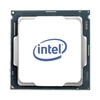

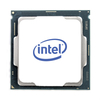
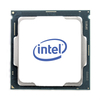


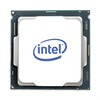
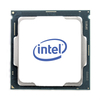
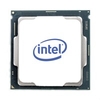
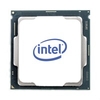




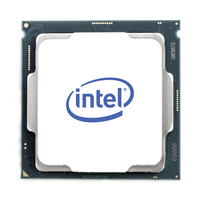




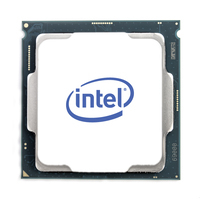
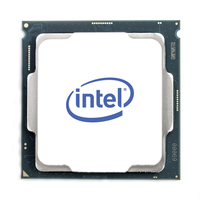
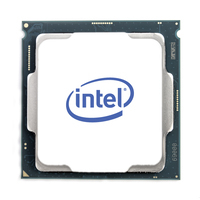
 Denmark
Denmark